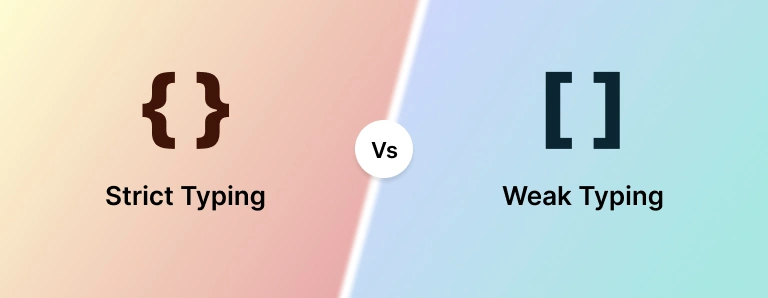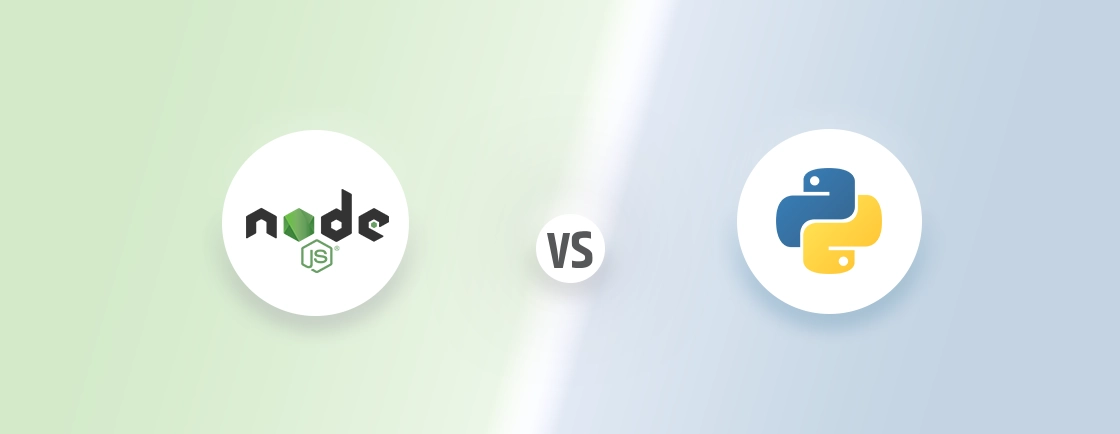Quick Summary
Choosing the right authentication for your Laravel project can be tricky. This guide breaks down Laravel Breeze, Jetstream, and Fortify, highlighting their features, strengths, and ideal use cases. From lightweight simplicity with Breeze, to advanced tools and team management in Jetstream, and backend-focused flexibility with Fortify, you’ll get clear insights to pick the best solution for your project’s needs.
Table of Contents
Comparing Laravel Breeze vs Jetstream vs Fortify is important when building Laravel sites, as authentication is a crucial aspect that ensures user security and access control. Laravel offers several packages to streamline authentication, including Breeze, Jetstream, and Fortify. Each package offers a distinct set of features and approaches, catering to different project needs.
To help you decide which one to choose for your Laravel project, we’ll dive into an overview of each and their key features. We’ll also compare them based on factors like performance, flexibility, security, cost, and more. So, with no further ado, let’s start with a detailed comparison.
Laravel Breeze vs Jetstream vs Fortify
| Aspect | Laravel Breeze | Laravel Jetstream | Laravel Fortify |
|---|---|---|---|
| Purpose | Simple, minimalistic authentication | Comprehensive authentication with advanced features | Backend authentication logic with custom front-end |
| Front-End Scaffolding | Yes (Blade templates with Tailwind CSS) | Yes (Blade with Livewire or Vue/React with Inertia.js) | No (Backend only, you build the front-end) |
| UI/UX Features | Basic UI with Blade and Tailwind CSS | Modern UI with Livewire or Inertia.js | None, relies on your custom front-end |
| Complexity | Simple | Complex due to additional features | Medium to High, depending on front-end implementation |
| Team Management | No | Yes, includes team management features | No |
| Two-Factor Authentication | No | Yes | Yes |
| API Support | No | Yes, includes API token management | Yes, backend routes for API token management |
| Session Management | Basic | Advanced (includes session management UI) | Included (backend support) |
| Ideal Use Case | Simple projects or quick setups | Complex applications requiring advanced features | Custom applications where front-end flexibility is needed |
| Customization | Basic customization of Blade views | High, with support for custom front-end components | Full control over front-end, highly customizable |
| Learning Curve | Low | High | Medium |
| Development Speed | Fast (minimal setup) | Slower (more configuration and setup) | Depends on frontend development time |
| Security Features | Basic (Password reset, email verification) | Advanced (MFA, API tokens, team roles) | Advanced (MFA, password confirmation, etc.) |
| Integration with Other Tools | Limited to basic Laravel features | Deep integration with Laravel ecosystem tools | Flexible, integrates with any front-end or existing setup |
What is Laravel Breeze?
Laravel Breeze is a lightweight and minimal authentication starter kit for Laravel, one of the most popular PHP frameworks. It offers a simple, no-frills way to add authentication to your projects.
With Breeze, you can quickly set up user registration, login, password resets, and email verification. It’s perfect for developers who want a fast, clean authentication setup without extra dependencies or complexity.
Key Features of Laravel Breeze
- Simple and Lightweight: Breeze is designed to be a straightforward solution for authentication. It offers just the essentials, making it easy to understand and customize.
- Blade Templating: The frontend is built using Laravel’s Blade templating engine, allowing developers to work with a familiar syntax and easily modify the views.
- No frontend scaffolding: Unlike Jetstream, Breeze doesn’t include built-in frontend scaffolding for Vue, React, or Livewire. This gives you more flexibility when choosing your frontend frameworks.
- Controller and Route Setup: Breeze provides pre-built controllers and routes that handle all the common authentication tasks. This includes routes for logging in, registering, password resets, and email verification.
- Customization-Friendly: Because it is minimal, Breeze makes it easy to extend and modify the authentication flow and user interface.
- API Support: It also offers an API mode, allowing you to set up API authentication easily, which is useful for building SPAs (Single Page Applications) or mobile applications.
- Dark Mode Support (via Tailwind classes): Breeze makes it easy for developers to implement dark mode with Tailwind CSS classes, improving the user experience in modern applications.
- Better Developer Experience: With its simplicity and clear structure, Breeze makes development smoother, reducing setup time and allowing developers to focus on building features rather than wrestling with complex scaffolding.
Laravel Breeze is a minimalist and efficient authentication solution that’s perfect for small to medium-sized projects. Its focus on core features and lack of frontend scaffolding offers flexibility and speed.
What is Laravel Jetstream?
Laravel Jetstream is a robust authentication and user management solution for Laravel applications. It goes beyond the basics, offering not just login and registration, but also password resets, email verification, and API token management.
Jetstream also includes advanced features like team management and two-factor authentication. It’s designed to give developers a modern, ready-to-use system that covers most authentication needs while maintaining flexibility for customization.
Key Features of Laravel Jetstream
- Authentication and Registration: Jetstream includes all the necessary scaffolding for user authentication. That includes registration, login, password reset, and email verification.
- Two-Factor Authentication (2FA): It supports two-factor authentication by default, enhancing the security of user accounts.
- Session Management: Users can manage sessions across devices, providing an added layer of control and security.
- API Support via Laravel Sanctum: It integrates with Laravel Sanctum to provide API token management. That allows for the development of SPAs, mobile applications, and token-based APIs.
- Advanced UI Components: Jetstream integrates with either Livewire or Inertia.js for building dynamic, modern user interfaces. Livewire provides a way to build dynamic interfaces using Blade components. On the other hand, Inertia.js allows you to build single-page applications using Vue.js or React as the frontend framework.
- Responsive Design: Jetstream uses Tailwind CSS for styling, ensuring that your application is responsive and has a modern design out of the box.
- Profile Management: Includes features for user management and updating profile information.
- Team Management: Jetstream supports team management and role assignment, making it ideal for collaborative applications.
- Account Deletion: Users can safely delete their accounts, giving them full control over their data.
- Session Security: Jetstream offers enhanced session security features, including the ability to log out of other devices.
- Email/Password Update Flow: Provides a seamless way for users to securely update their email addresses or passwords.
Jetstream is a comprehensive authentication and authorization system that provides a modern UI and advanced features. That makes it an ideal choice by Laravel development company for building large-scale projects.
What is Laravel Fortify?
Laravel Fortify is a backend-focused authentication and authorization system for Laravel applications. It provides essential features like email verification, password resets, two-factor authentication, and rate limiting.
Unlike Breeze or Jetstream, Fortify handles only the backend logic. This approach gives developers full freedom to build their own frontend or integrate Fortify with any interface they prefer.
Key Features of Laravel Fortify
- Authentication Handling: Provides routes and controllers for handling common authentication tasks, including user registration, login, password resets, and email verification.
- Password Confirmation: Includes routes for requiring users to confirm their password before accessing certain parts of the application.
- Compatible with other packages: It can be used in conjunction with other Laravel packages, such as Laravel Cashier, to provide a more complete solution.
- Account Management: Supports features like updating user profiles, managing passwords, and verifying email addresses.
- Customizable Responses: Allows customization of the responses to authentication requests, enabling developers to tailor the experience to their specific needs.
- No Front-End Scaffolding: Fortify does not provide any frontend views or components, meaning you have complete control over building the frontend.
- Two-Factor Authentication (2FA): Built-in support for 2FA adds an extra layer of security for user accounts.
- Rate Limiting: Protects your application from brute-force attacks by limiting repeated authentication attempts.
- Extensible Actions: Developers can extend Fortify’s actions to fit unique authentication workflows or business requirements.
- Foundation for Other Packages: Acts as a solid backend authentication layer that can power other Laravel packages or custom solutions.
Fortify is a flexible and customizable backend authentication solution. It’s suitable for projects that need granular control over the authentication logic and want to build their own frontend.
Choosing the Right Laravel Authentication Solution
Choosing the right authentication solution for a Laravel depends on your project’s requirements and the authentication features you need. Here’s a guide to help you choose between Laravel Breeze, Jetstream, and Fortify:
Laravel Breeze: Simplicity and Ease of Use
If you’re looking for a quick authentication solution, Laravel Breeze is the way to go. It offers a minimalist approach, focusing on the core features without unnecessary complexity.
Why Choose Breeze?
- Minimalistic: Breeze provides a straightforward setup with essential authentication features like registration, login, and password reset.
- Blade Templates: Uses Laravel’s Blade templating engine, making it easy to customize views.
- Quick Setup: This is ideal for web developers who want to get started quickly without needing advanced features.
Use Laravel Breeze if:
- You need a simple and lightweight authentication solution.
- You don’t require extensive frontend scaffolding.
- You want to have maximum flexibility when choosing your frontend technology.
- You prioritize speed and efficiency.
Ideal for applications that need basic authentication features with minimal setup.
Laravel Jetstream: Advanced Features and Modern UI
For those seeking an authentication system with a modern user interface, Laravel Jetstream is the ideal choice. It provides various features and integrates seamlessly with popular frontend frameworks.
Why Choose Jetstream?
- Feature-Rich: Jetstream includes advanced features like two-factor authentication, team management, and API token management.
- Modern UI Options: Supports dynamic UI components via Livewire or Inertia.js, allowing for the creation of reactive, single-page applications.
- Comprehensive: Provides a full suite of features for managing user authentication, making it ideal for more complex applications.
Use Laravel Jetstream if:
- You need a comprehensive authentication and authorization system with built-in frontend scaffolding.
- You want to use Inertia.js for modern single-page applications.
- You prefer a more feature-rich user interface.
- You require complex Laravel policies and gates.
Suitable for projects that need advanced features like two-factor authentication, team management, and API support.
Laravel Fortify: Backend Flexibility and Customization
If you need granular control over your authentication logic and have custom requirements, Laravel Fortify is the perfect solution. It offers flexibility and customization options without reducing the simplicity.
Why Choose Fortify?
- Backend Focused: Fortify handles all backend authentication logic, allowing you to build a custom frontend or integrate with your existing one.
- Highly Customizable: Since it doesn’t come with frontend scaffolding, you have full flexibility in implementing your own user interface.
- Advanced Security Features: Includes support for two-factor authentication, password confirmation, and more. That makes it suitable for applications with strict security requirements.
Use Laravel Fortify if:
- You need a streamlined and efficient authentication solution that focuses on the essentials.
- You want a minimalist approach to authentication.
- You prioritize flexibility and customization.
- You don’t require extensive frontend scaffolding or complex authorization rules.
Ideal if you need a robust backend authentication solution without a predefined frontend or use a headless approach.
By understanding what to choose and knowing the ideal use of the package, you will easily select the best one. Now, let’s dive into a detailed comparison that Laravel development experts take into consideration for choosing a package.
Detailed Comparison Between Breeze, Jetstream, and Fortify
Laravel provides various starter kits and authentication packages that suit different project needs. Breeze, Jetstream, and Fortify are three popular options, each with its own set of features, strengths, and use cases. Here is a detailed comparison to help you understand the differences and choose the right package for your project:
Frontend Scaffolding
Breeze comes with simple and minimal frontend scaffolding using Blade templates and Tailwind CSS. It includes views for authentication features like login, registration, password reset, and email verification. While Breeze provides the basics, it’s easy to customize and extend the UI to match your specific needs.
Jetstream offers more complex frontend scaffolding with two options: Livewire (Blade) or Inertia.js (with Vue.js or React). This provides flexibility depending on whether you prefer server-side or client-side rendering. While Jetstream’s is more feature-rich, customizing it can be complex, especially when using Inertia.js.
Fortify doesn’t provide any frontend scaffolding. It is a backend-only package, meaning you must build your own frontend from scratch or integrate it with another framework. Since Fortify doesn’t include any frontend components, you have maximum control over design. However, it can increase the cost of web development.
Verdict: Breeze offers optimal performance for small to medium projects. Jetstream is scalable for large applications but may require performance tuning. Fortify provides flexibility in performance based on custom frontend implementation.
Performance and Scalability
Breeze is lightweight, leading to faster performance and quick load times due to its minimalistic approach. It is scalable for small to medium-sized applications but may need customization to handle more complex requirements.
Jetstream is more feature-rich, which may reduce performance compared to Breeze, especially if using Inertia.js. However, it’s well-optimized for modern web applications. It scales well due to its advanced features like team management and API support, though these may add overhead.
Fortify, being a backend-only solution, has no inherent performance overhead from the frontend. Performance depends entirely on how you implement the frontend. Fortify offers high scalability because you can choose any frontend technology that meets your needs.
Verdict: Breeze offers optimal performance for small to medium projects. Jetstream is scalable for large applications but may require performance tuning. Fortify provides flexibility in performance based on custom frontend implementation.
Customization and Flexibility
Breeze is easy to customize. All you need to do is modify the Blade templates and Tailwind CSS styles. While Breeze is flexible for basic customizations, it is not ideal for complex applications without significant extensions.
Jetstream is more complex to customize, especially if you’re using Inertia.js. However, it offers a lot of built-in functionality that reduces the need for custom development. It provides options for server and client-driven development. Plus, its built-in features, like team management, can be further extended.
Fortify offers maximum customization since it doesn’t impose any frontend structure. You have full control over how you implement the UI. Fortify is the most flexible option because you can integrate it with any frontend framework or even build a custom design from scratch.
Verdict: Breeze is simple to use but has limited customization options. Jetstream is highly customizable with a modern UI framework. Fortify is the most flexible, allowing developers to build custom frontends.
Complexity and Learning Curve
Breeze is the simplest to learn and implement. It’s easy to set up and use, making it ideal for those who need a quick solution. The learning curve is gentle, especially for developers familiar with Laravel’s Blade templates.
Jetstream is more complex due to its additional features and the choice between Livewire and Inertia.js. Setting up and understanding all the components can be challenging, especially for beginners. The learning curve is steeper, particularly if you’re new to Livewire or Inertia.js.
Fortify is complex because it only provides backend services. You’ll need to manage the frontend yourself, which can be complex depending on your chosen approach. The learning curve is the steepest with Fortify, especially if you need to build a frontend from scratch.
Verdict: Breeze is the easiest to learn and implement. Jetstream has a steeper learning curve due to its complexity. Fortify offers backend simplicity but can become complex depending on the frontend implementation.
Integration with Other Tools
Breeze is designed to integrate seamlessly with other Laravel packages. However, it lacks some of the advanced integrations that Jetstream offers.
Jetstream is built to integrate with Laravel Sanctum and other tools like Laravel Cashier for billing. Its extensive support for various Laravel tools and packages makes it highly versatile for building complex applications.
Fortify is flexible and can be integrated with any frontend framework or toolset, as it only handles the backend. That makes it adaptable to a wide range of project setups. Fortify supports backend tool integration, but frontend tool integration is entirely up to the developer.
Verdict: Breeze integrates well with basic Laravel features. Jetstream offers extensive integration with advanced Laravel tools. Fortify provides strong backend integration but requires manual frontend tool integration, offering the most flexibility.
Security
Breeze includes basic security features like password hashing, email verification, and CSRF protection. It’s secure for simple applications but lacks advanced features like two-factor authentication. Suitable for small to medium-sized applications with standard security requirements.
Jetstream includes advanced security features like two-factor authentication, session management, and API token management. That provides a higher level of security, making it suitable for applications with more stringent security needs.
Fortify offers robust backend security features, including two-factor authentication and session management. However, because it doesn’t provide a frontend, the security is entirely up to how you implement it.
Verdict: Breeze is sufficient for basic security needs. Jetstream offers comprehensive security for complex applications. Fortify is highly secure on the backend, with frontend security determined by the developer.
Cost Considerations
Breeze is cost-effective in terms of development time and resources. It’s quick to set up and requires minimal customization, making it a budget-friendly option. Plus, development efforts are also low, as it provides ready-to-use components.
Jetstream can be more costly in terms of development time due to its complexity and additional features. The added functionality may require more time to configure and customize, which could increase costs.
Fortify may have higher upfront costs because you need to build and integrate the frontend yourself. However, it offers long-term flexibility that could save costs in larger projects where custom solutions are necessary.
Verdict: Breeze is cost-effective for simple projects. Jetstream may have higher development costs due to its complexity. Fortify offers flexibility in cost, depending on the frontend approach.
By understanding and comparing the above-mentioned factors, you can choose the ideal Laravel authentication. If you want simplicity, choose Breeze, and if you want more customization, use Jetstream or Fortify. To develop your site with ideal technology, consider hiring Laravel developers.
Final Verdict
The choice between Laravel Breeze, Jetstream, and Fortify depends on your project’s specific requirements.
Choose Laravel Breeze if:
- You need a simple and lightweight authentication solution.
- You don’t require extensive frontend scaffolding.
- You prioritize speed and efficiency.
Choose Laravel Jetstream if:
- You need a comprehensive authentication and authorization system.
- You want to use Inertia.js for modern single-page applications.
- You require complex authorization rules.
Choose Laravel Fortify if:
- You want a minimalist approach to authentication.
- You prioritize flexibility and customization.
- You want to have maximum flexibility when choosing your frontend technology.
By comparing specific features and checking which aligns with your needs, you can choose the ideal package. If you want to develop a site that uses such authentication and authorization, hire Laravel developers.
FAQs About Laravel Breeze vs Jetstream vs Fortify
Can I use multiple authentication packages in the same Laravel project?
It’s generally not recommended to use multiple authentication packages in the same project. However, you can extend or customize existing packages to meet your specific needs.
Which package is better for API-only applications?
Breeze or Fortify are suitable for API-only applications. Both packages provide the necessary features for API authentication and authorization.
Do I need to know Vue.js or React to use Laravel Jetstream?
No, you don’t necessarily need to know Vue.js or React to use Jetstream. You can opt for the Livewire stack, which uses Blade components. However, if you choose the Inertia.js stack, knowledge of Vue.js (or React) will be beneficial.
Which authentication package should I choose for a new Laravel project?
It depends on your project needs. If you want something simple and quick, Laravel Breeze is ideal. For more advanced features like team management or two-factor authentication, Jetstream is better. If you only need backend logic and want to build your own frontend, Fortify is the choice.
Which one is easier for beginners: Breeze, Jetstream, or Fortify?
Laravel Breeze is the easiest for beginners. It’s lightweight, simple, and easy to understand. Jetstream is more advanced and may feel complex at first. Fortify focuses only on the backend, so beginners might find it harder without a frontend setup.
Which authentication package is best for large, feature-rich applications?
Jetstream is usually the best for larger apps. It comes with extra features like team management, two-factor authentication, and session control. Breeze is simple but may need extra work to add advanced features. Fortify gives flexibility but requires building the frontend yourself.
Choose Your Perfect Laravel Authentication Solution
Consult our Laravel experts and choose the perfect tool for your app’s security needs.





